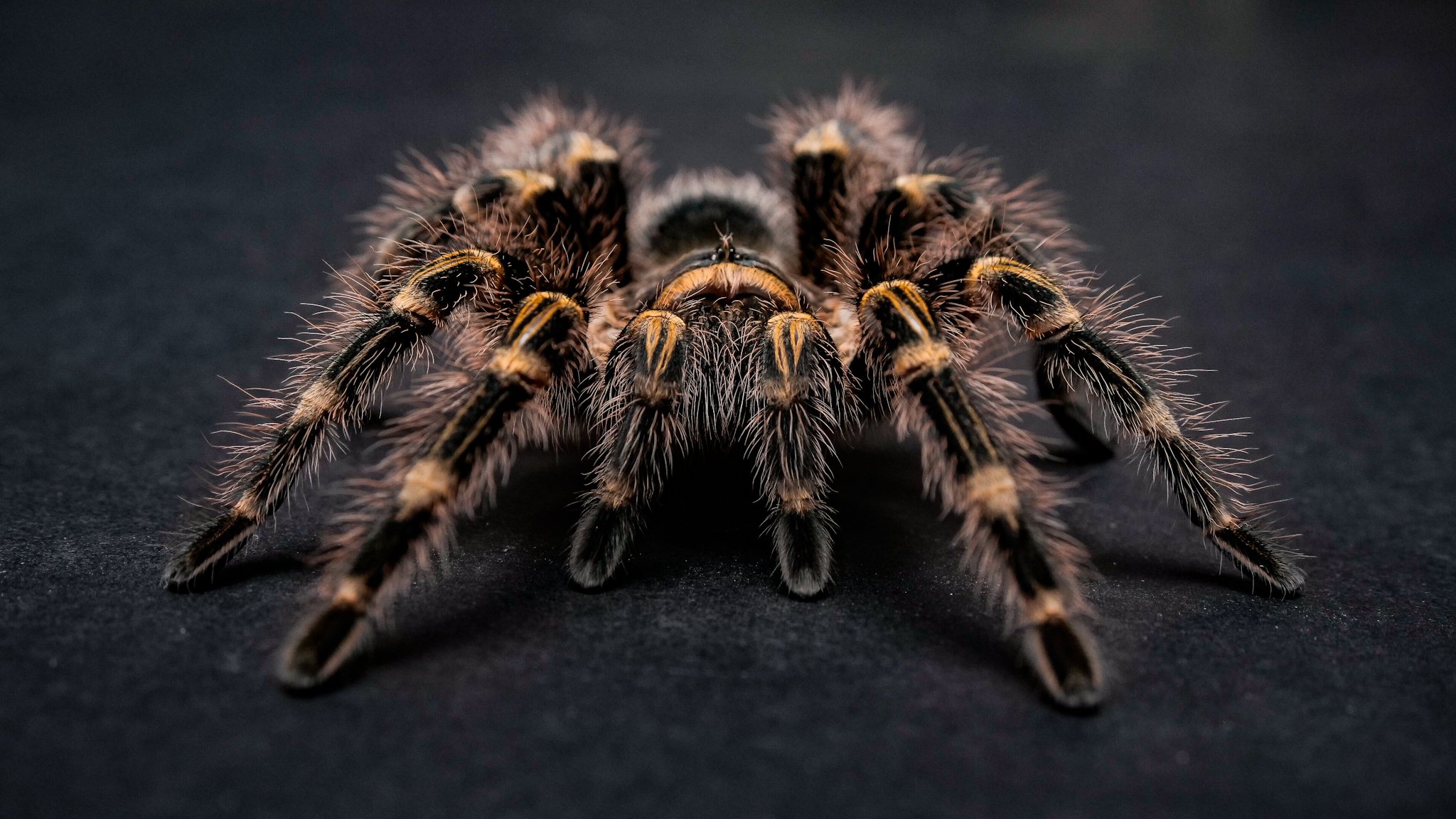Chaco Golden Knee Tarantula (Grammostola pulchripes) Care Sheet

Care & Husbandry Video
I show you exactly how I set up, feed, and care for my Grammostola pulchripes, including temperatures, enclosures, and more. I also include some interesting facts and endemic location for the Chaco Golden Knee Tarantula.
Scientific Name: Grammostola pulchripes
Common Name: Chaco Golden Knee Tarantula
Type: Terrestrial
Category: New World
Endemic Location: Paraguay, Argentina
Diagonal Leg Span (DLS): 7” (18cm)
Urticating Hairs: Yes Type III
Growth Rate: Medium
Life Expectancy: Females 15 years / Males 5 years
Recommended Experience Level: Beginner
Grammostola pulchripes, also known in the hobby as the Chaco Golden, is a New World Terrestrial tarantula that is endemic to the sub-tropical nation of Paraguay. This T can grow to an adult size of around 7-8” with males living about 6 or 7 years while females can live 20-25 years. This species has a medium growth rate and while it isn't the slowest grower, if you get your golden knee as a small sling, it may be years before you see the true adult coloration. Being a new world tarantula, this T does not have medically significant venom but does possess urticating hairs. This species has a reputation of being very docile and rarely kicking hairs but bare in mind temperament can differ between specimens and even between molts of the same specimen. This tarantula is an opportunistic burrower, but the older they get, the less they seem to burrower and the more they tend to just move substrate around their enclosure.
I keep my spiderlings in a basic acrylic spiderling enclosure with enough substrate for them to burrow. I provide them with a hide and a water dish if possible. This species is notorious for filling its water dish with substrate, so you may have more luck dripping water on the leaves of a plant or on the side of the enclosure. As slings I kept the substrate slightly moist, like with more of my spiderlings, but not swampy or over saturated. As juveniles, I move them into an acrylic terrestrial enclosure with more width than height. This species is known to climb the walls and across the top of the enclosure, especially for the first month or two in a new enclosure...so it is important to make sure there in plenty of substrate in the enclosure so the T doesn't have a long way to fall if it were to slip while crawling across the top of its enclosure. They also may still want to burrow at this stage, so it is a good idea to make sure they have adequate dirt to dig into. I provide a hide and water dish and keep the substrate dry but make sure to clean the dirt out of its water dish so clean water is always available. When they reach adult size. I keep my Chacos in a 5-10 gallon aquarium or acrylic enclosure. This species is still prone to climb walls at this size, so it is important to still fill the enclosure up ½ way to ¾ the way with substrate so the T has no more than 1.5 times its leg length to fall from the top. If you are using a 5 or 10 gallon enclosure, it is important to avoid screen lids as the T can get its feet stuck in the screen and be stuck hanging upside down. You can replace the screen with a sheet of acrylic with holes drilled in it, or at the very least get a heavy duty reptile lid with a thick metal screen with plenty of room in the grate sp the T’s feet do not get caught. Again, I provide my adults with a hide and water dish and keep the substrate dry. I keep this T at the same temperature of most all my T’s which is a room temperature between 68-74f...if you are comfortable, your tarantula is comfortable.
The Grammostola pulchripes is a fairly good eater unless they are fasting while in premolt. It is a Grammasolta, so there is the possibility that it will fast for months at a time, so don't be too concerned if it goes long periods of time without taking food. Just pull out any uneaten prey and try again in a week or two. I feed my spiderlings Flightless Fruit Flies when they are under 0.5” and then switch to one small cricket or roach once or twice a week depending on the size of the abdomen. I try to avoid over feeding my spiderlings. Once they grow to the juvenile stage, I feed them 2-3 medium crickets or a meal worm or two once a week, again cutting back on the amount or frequency as the abdomen becomes swollen and it appears to be approaching a molt. And i feed my adult female G. pulchripes 4-5 adult crickets every 7-10 days and occasionally switch up her feeders with a couple big roaches or meal worms.
This T is quite the excavator at any stage, so don't spend too much time meticulously setting up its enclosure as it will spend most of its night rearranging everything in its enclosure and destroy any elaborate setting you made for it. My experience with these T;s is that they are very docile and mine have never kicked hairs at me, but they are also curious and nearly anytime I take the lid of the enclosure, my chacos will slowly start making their way up the wall and out their home doing a little exploring. This is an amazing tarantula to observe with their bright gold accents and beautiful appearance. They are usually out of display and not very skittish. It is fascinating to watch them diligently moving dirt around constantly rearranging their environment and filling their water dish up with dirt. This is a hardy and thick tarantula and very easy to care for. They make for wonderful beginner species and are relatively inexpensive and widely available. Be wary of buying this species from your local chain pet stores like Petco as they tend to sell a lot of adult males and charge nearly $100 for a T you could pick up from an online dealer, like Fear Not Tarantulas, for less than half that price. I do not normally handle any of my T’s, but this T is on a very short list of Ts i would consider handling when showing off my collection to my friends. Overall, this species is a staple in the hobby because it is an amazing tarantula in many ways. It is easy to care for, docile, and a must have for any collection!






